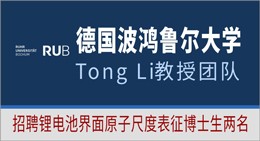Journal of World Prehistory ( IF 3.8 ) Pub Date : 2023-05-09 , DOI: 10.1007/s10963-023-09174-6
Fabio Saccoccio

|
Situla Art is an Iron Age artisanal tradition dated to c. 660/650–275 BC, corresponding to the Hallstatt C2 to the La Tène B2 phases. It is characterised by striking sheet-bronze objects with embossed and/or incised decoration in Orientalising taste with animals, plants and/or human figures generally distributed in friezes. Situla Art is documented between the Apennines and the eastern Alps, and Este is suggested as its key centre. This paper provides a long overdue literature review, a working definition for Situla Art and an updated catalogue with 306 objects. It also (re-)investigates the influences which may have led to the emergence of Situla Art, its development and decline. Hats and earrings depicted in Situla Art are investigated to highlight their identity valencies, and to provide socio-political insights on the Iron Age elite who used Situla Art as a non-linguistic symbol-based system to acquire, exhibit and legitimate power over time in the area of its distribution.
中文翻译:

锡图拉艺术:亚平宁山脉和东阿尔卑斯山之间发现的铁器时代手工传统及其身份价
Situla 艺术是一种铁器时代的手工艺传统,其历史可追溯至公元 100 年。公元前 660/650–275 年,对应于哈尔施塔特 C2 到拉泰恩 B2 阶段。它的特点是引人注目的青铜片物体,带有东方风格的浮雕和/或雕刻装饰,动物、植物和/或人物形象通常分布在饰带中。斯图拉艺术在亚平宁山脉和东阿尔卑斯山之间有记录,埃斯特被认为是其主要中心。本文提供了一份迟来的文献综述、Situla Art 的工作定义以及包含 306 件物品的更新目录。它还(重新)调查了可能导致斯图拉艺术的出现、发展和衰落的影响。对 Situla Art 中描绘的帽子和耳环进行了研究,以突出其身份效价,并提供对铁器时代精英的社会政治见解,他们使用 Situla Art 作为非语言符号系统,随着时间的推移获得、展示和合法权力。其分布区域。































 京公网安备 11010802027423号
京公网安备 11010802027423号